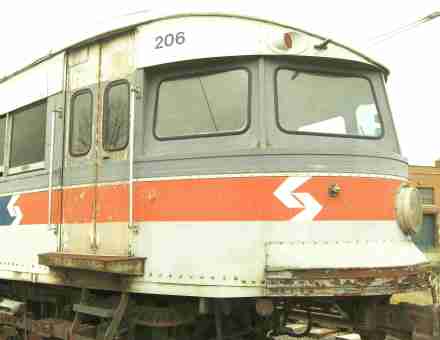The below is the business end of one of the city’s most recognizable industrial products. Like the Stetson hat, the Atwater Kent radio, a Disston saw, or a Cramp’s ship, the trolleys and interurban cars produced by the J.G. Brill Company at 31st and Chestnut and later 62nd and Woodland were some of the most sophisticated and durable pieces of industrial machinery ever to roll off a Philadelphia assembly line. The below car in SEPTA livery, a Brill “Bullet,” #206 was designed in 1931 and is a specimen of industrial design that plied the rails between 69th St. Terminal and Norristown until 1990.
Built to Last: J.G. Brill’s “Bullets”


